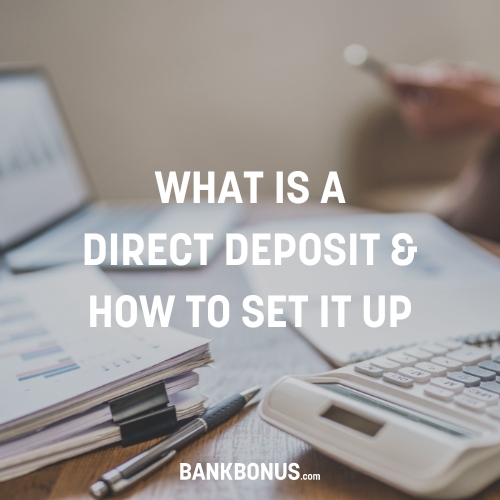When it comes to bank accounts, there are many different types to choose from. Checking and savings accounts are two of the most basic bank accounts available. Each type of account has a specific purpose in helping you manage your personal finance and reach financial goals.
Many bank accounts are variations of checking and savings accounts, including money market, high-yield savings accounts, and deposit accounts.
Checking and savings accounts share some similarities, but these two types of bank accounts actually serve two very different purposes.
Checking vs. Savings Accounts
Understanding the differences between a checking and a savings account can help you make sure you use them as intended. This can not only help you save more money but avoid unnecessary fees.
You can open a personal checking or savings account. You can also open a business checking or savings account if you have a business. It’s common to open separate accounts (checking and savings) for both your personal and business if you’re an entrepreneur.
In most cases, you will need to have both a checking and a savings account.
Basic Overview of Checking vs. Savings Accounts:
| Checking Account | Savings Account | |
| Use for | Spending money and paying bills | Saving money and earning interest |
| APY | Very low, if available | Varies but can get quite high |
| Withdrawal limits | None | 6 per month |
| Minimum requirements | Varies by bank and account type | Varies by bank and account type |
| Mobile banking | Yes | Yes |
| Insured by FDIC | Yes | Yes |
FDIC (Federal Deposit Insurance Corporation) insurance is typically limited to $250,000, but some banks offer even higher amounts. Both accounts can also include several distinct features as well as common and different fees.
We will explore this in more depth as we go through each account individually.
Checking Accounts
Checking accounts are bank accounts used to manage your day-to-day financial requirements. Generally speaking, when setting up a direct debit for things such as your wage or other monthly income, it all goes into your checking account before it gets distributed to where it needs to go.
Most checking accounts come with several tools, such as online banking, that make it easier to manage your money.
Typically, checking accounts do not earn any interest; however, some financial institutions such as banks and credit unions have started to offer low APY rates on what they call an interest-bearing checking account.
Many banks offer tiered checking accounts with better features and steeper requirements the higher up you go. Either way, you can expect checking accounts to have the following features, regardless of the tier:
- Mobile banking
- Automatic bill pay
- Direct deposits
- Checks
- Debit cards
Checking Account Fees
Checking accounts can come with several different fees, and each bank is free to set its own fees and waiver.
Here are some of the fees that banks might charge when it comes to checking accounts:
- Monthly maintenance fee
- Overdraft fee
- ATM fee
- Wire transfers
- Paper statements
Some banks offer ways to avoid checking account fees, while others waive them altogether.
Since not all banks charge all of these fees, shopping around can help you find the account with the most beneficial fee structure for your financial needs and requirements.
For example, many banks waive the monthly maintenance fee, providing the account holders meet the requirements, like having a minimum balance in your account or making a monthly direct deposit.
Pros & Cons of Checking Accounts
Checking accounts, just like every other type of account, have its own pros and cons. Understanding these pros and cons can help you use the account in the best way possible.
Pros:
- Accessibility: Checking accounts offer easy access to your money with online banking, debit cards, checks, and overdraft typically included with all checking accounts.
- Rewards: Some checking accounts include rewards schemes, including cash back and gift cards.
Cons:
- Little or no interest: Checking accounts do not earn a lot of interest, and in most cases, they earn nothing at all.
- Requirements: Many checking bank accounts have minimum account requirements that need to be met to avoid fees.
Learn More:
| Bank | Bonus | Expires | Requirements | |
|---|---|---|---|---|
| up to $400 | September 3, 2024 |
|
Learn More | |
| $300 | October 17, 2024 |
|
Learn More |
Savings Accounts
Savings accounts are meant to help you save money. They offer higher interest rates but limited withdrawals. While this might seem like a big restriction, remember that savings accounts are there to help you save money.
These restrictions can actually help you get the most out of your savings account. This is great if you’re saving for a down payment or growing your emergency fund.
In fact, withdrawals from savings accounts are limited to 6 a month. This limit has been put in place by the Federal Reserve through what is known as Regulation D. While this rule was removed in April of 2020, some banks still apply it.
Any withdrawals over and above these 6 can result in a fee or, if done consistently, see your savings account switched to a checking account. To be on the safe side, check the rules that apply to your bank account.
Just like checking accounts, many banks offer tiered savings accounts. Generally speaking, the more money you keep in your account, the higher the tier and the better the interest rate you’ll earn.
Savings accounts come with several different features, including:
- Mobile banking
- High APY rates
- Automatic transfers
- Alerts
Account features will vary from one bank to the next, so be sure to check what your bank is offering you before deciding to open an account with them.
Think about things like free ATM withdrawals, how easy it is to find local network ATMs, the ability to transfer money abroad, and the budgeting tools the bank offers.
This will help you make sure you open a bank account with a provider that actually gives you what you’re after.
Savings Account Fees
Although savings accounts don’t typically come with many fees, there are still some fees that you need to be aware of. This can help you avoid having to pay them. You should also keep in mind that different banks might have different fee schedules.
You should be able to find this information on the bank’s website relatively easily.
Here are some of the common fees you can expect with a savings account:
- Monthly maintenance fee
- Withdrawal limit fee
Avoiding these fees is easier with a bit of forward planning. Monthly maintenance fees can typically be waived off if you either maintain a minimum balance or link other accounts with the bank. Be sure to check this to avoid paying the monthly fee.
To avoid paying the withdrawal limit fee, make sure you keep your monthly withdrawals to under 6 a month. If you’re finding yourself having to withdraw from your savings, account more than the allowed 6 times, and make a budget so that you’ll know what you will need to withdraw in advance.
If you’re sure that you will not need the money you want to save for a period of time, you might want to consider a CD account instead. CD (Certificates of Deposit) is a type of savings account with a fixed period of maturity.
This means that you will not be able to withdraw the money for a period of time, which can vary from a few months to a few years.
In return, you will earn higher interest rates. You might also want to consider high-yield savings account to earn even more interest on the money you save.
Pros & Cons of Savings Accounts
Savings accounts, too, have their own pros and cons. Of course. These can be very personal as everyone has different financial requirements and lifestyle choices. Regardless of what you want to achieve with your savings account, knowing the advantages and disadvantages beforehand can help you plan your finances better.
Pros:
- High-interest rates – Sayings accounts offer high-interest rates, in some cases exceeding the 1% APY rate.
- Protections – Some banks allow savings and other types of accounts to be linked, protecting you from overdraft fees.
Cons:
- Withdrawal limit – Most banks limit withdrawals from savings accounts to 6 a month with fees applicable for anything above that.
- Account requirements – Many banks impose account requirements to avoid paying the monthly maintenance fee.
Learn More:
| Bank | Bonus | Expires | Requirements | |
|---|---|---|---|---|
| $100 | November 22, 2024 |
|
Learn More | |
| $100 | December 31, 2024 |
|
Learn More |
Checking vs. Savings Accounts: Do You Need Both?
Both savings and checking accounts serve a unique purpose, and you’re likely to need both. Before opening a bank account, be sure to check if there are any requirements in place and make sure that you will meet them.
Some banks will have minimum balance requirements that you’ll need to meet or a number of transactions they’ll want you to complete, so make sure to check before you commit to one bank.





No comments yet. Add your own